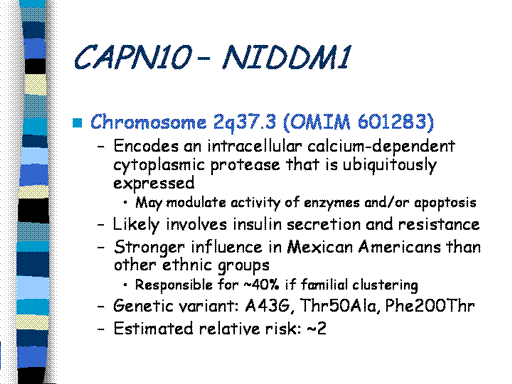CAPN10,
now known as NIDDM1, was originally mapped to the tip of the long
arm of chromosome 2 in Mexican American sib-pairs.
It encodes an intracellular calcium-dependent cysteine protease
(calpain 10) that is ubiquitously expressed.
A haplotype that was initially linked to T2D included an intronic
A to G mutation at position 43, which appears to be involved in
CAPN10 transcription. Two
amino acid polymorphisms (Thr504Ala and Phe200Thr) have also been
associated with T2D risk.
However, it has been suggested that the coding and nonconding
polymorphisms do not independently influence T2D risk, but instead
contribute to an early age at diagnosis. Physiological studies suggest
that variations in calpain 10 activity effects insulin secretion, and
therefore, susceptibility to T2D.
Studies from other ethnic groups indicate that the contribution of this
locus to T2D risk may be much larger in Mexican-American than Caucasian
populations.
